David Dye's Blog, page 9
March 21, 2025
3 Key Leadership Communication Skills to Build a High Trust Culture
Episode 295: How can you build a high trust culture that empowers your team to solve problems faster, innovate more, and reduce stress?
In this episode, we explore the power of a high trust culture and how it can completely transform your team’s ability to collaborate and solve problems effectively. If you’ve been facing challenges with getting your team to share ideas, open up, or work together seamlessly, this episode will give you proven strategies to overcome those hurdles and build the trust your team needs to thrive.
By tuning in, you’ll learn:
The #1 skill for building trust: how to model the behaviors you want to see in your team.How to communicate your vision consistently to reinforce the culture you’re building.The importance of follow-through: using celebration and accountability to reinforce trust and keep momentum.Press play now and start building the trust culture that will accelerate your team’s performance today!
Building a Culture to Solve Problems Faster(00:00) – The episode introduces the power of a trust culture and how it can dramatically improve your team’s problem-solving abilities and overall productivity. David emphasizes that fostering a high-trust environment leads to quicker solutions, better ideas, and stronger collaboration.
(02:00) – David talks about the first step in building a trust culture: understanding that it takes time. Creating an environment where people feel safe to speak up, ask questions, and share ideas requires patience and consistent effort from the leader.
(02:57) – The importance of modeling behavior is introduced. Leaders must set an example by showing vulnerability, acknowledging their limitations, and creating space for others to contribute. Actions truly speak louder than words when it comes to trust culture.
(03:43) – The way you respond to team members’ ideas is crucial. If someone presents a less-thought-out idea, leaders should respond in a way that encourages further sharing without judgment. The leader’s response can either build or undermine trust.
(05:36) – David introduces the five-by-five communication plan as a method for reinforcing a trust culture. By consistently communicating the vision and values of the team, leaders can ensure alignment and keep everyone on the same page.
Reinforcing Trust Culture through Action(06:21) – Repeating the team’s vision consistently helps embed the desired culture in everyone’s mind. David highlights that over-communicating the values and goals is necessary to ensure they stick and become part of the team’s everyday mindset.
(07:13) – A discussion about having an open conversation about the team’s culture. Before diving into tasks, leaders should talk about the kind of trust culture they want to create, inviting feedback and exploring any concerns team members might have.
(08:54) – For teams with low trust, David suggests one-on-one conversations with each member to understand their perspective on what’s needed to create a successful culture of trust. Listening to their input can help leaders address concerns and build stronger relationships.
(10:35) – The episode introduces two powerful strategies for reinforcing a trust culture: celebration and accountability. When team members exemplify the trust culture, it’s important to celebrate these moments and reinforce the behavior. If someone falls short, leaders should address it constructively to maintain the culture.
(12:43) – David concludes with advice on practicing accountability in building a trust culture. He encourages leaders to invite their teams to hold them accountable, making it clear that trust goes both ways. This open invitation builds a stronger, more transparent environment.
The post 3 Key Leadership Communication Skills to Build a High Trust Culture appeared first on Let's Grow Leaders.
Personal Courage: How to Focus on What You Want (Not What You Fear)
You want more personal courage. You want to take that bold step, make the big decision, or speak up when it matters. But then… fear creeps in. What if it goes wrong? What if you fail? What if people judge you?
If that sounds familiar, you’re in good company Fear is natural. It’s wired into your brain to keep you safe. But here’s the problem: fear doesn’t just protect you from real danger—it also holds you back from opportunities, growth, and success.
So how do you move forward when fear is pulling you back?
I had an important conversation with Dr. Margie Warrell about her new book, The Courage Gap, and she shared a simple but profound shift in thinking:
🔥 “Focus on what you want, not on what you fear.” 🔥
That hit home. Think about it—how much mental energy do you waste imagining worst-case scenarios? Your brain is constantly scanning for potential threats, but most of the time, those threats are just stories you’re telling yourself.

Margie explained that when you focus on what you don’t want—failure, rejection, embarrassment—you feed your fear. That fear then hijacks your creativity and decision-making, keeping you stuck in a loop of hesitation. The key is to redirect your focus to what you do want. That shift in focus is a key to more personal courage
Next time you feel fear creeping in, ask yourself:
✅ What is my highest intention for this situation?
✅ What is actually within my control?
✅ Where do I want to put my energy?
Instead of playing out all the ways something could go wrong, shift your focus to the possibilities—the outcomes you want to create. Because what you focus on expands.
The Power of Writing It DownOne of the most powerful ways to reinforce this mindset shift is to physically write it down. Not on your phone, not on a laptop—with a pen and paper. Studies show that handwriting activates different areas of the brain that help you process and retain information better.
📝 Try this exercise: Take five minutes to write down your vision. What do you want to happen? How do you want to show up? What would success look like?
Fear thrives in uncertainty, but when you put your goals and intentions on paper, you create clarity. And clarity builds confidence.
NOTE: You know we’re big believers in creating a compelling team vision, which is a key activity in our SynergySprint Team Retreats. I love the idea of writing down your vision for more personal courage as well,
What We Get Wrong About FailureLet’s talk about failure—because it’s one of the biggest reasons people hesitate to act with courage. You’ve probably heard the phrase: “If you want to succeed, fail more.”
But as Margie pointed out, that’s not the whole story. Just failing more doesn’t automatically lead to success. The real key is learning from failure.
You can’t always control the outcome of your risks, but you can control how you reflect on them. Instead of seeing failure as proof that you weren’t good enough, ask yourself:
➡️ What worked?
➡️ What didn’t?
➡️ What can I do differently next time?
When you do this, failure stops being an endpoint and becomes a stepping stone. Every setback is a chance to refine your approach, develop resilience, and move forward with even more clarity and confidence.
Fear or Growth—The Choice is YoursCourage isn’t about eliminating fear—it’s about acting despite it. The difference between people who take bold action and those who stay stuck isn’t that the bold ones don’t feel fear. They do. They’ve just trained themselves to move forward anyway.
So the next time fear tries to hold you back, take a breath, grab a pen, and refocus.
💡 What’s one way you shift your mindset when fear starts creeping in? Drop your thoughts in the comments!
If you enjoyed this interview, let’s connect on LinkedIn, where I publish new Asking for a Friend Videos every week.
See Also; Managerial Courage: Practical Ways to Be More Daring
Share your Ideas: Practical Ways to Ensure Your Voice is Heard
The post Personal Courage: How to Focus on What You Want (Not What You Fear) appeared first on Let's Grow Leaders.
March 17, 2025
How to Build a Team Agreement and Get Your Team on Track
If your team’s expectations aren’t clear, or people aren’t meeting them consistently, you don’t just have a frustration problem—you have a clarity problem. One of the best ways to fix this is by creating a Team Agreement—or, as we like to light-heartedly call it, a Couth Code.
We started calling it a Couth Code after countless executives asked us the same exasperated question: “How do we teach couth?”
They weren’t asking about technical skills or strategic decision-making. They were frustrated by things people should know—things their mama should have taught them, or at the very least, things they should have picked up in school.
Simple, professional courtesies like responding to emails, showing up prepared, and not sharing data without context.
So, we decided to tackle it head-on—by giving teams a format to codify these unwritten rules into something clear, actionable, and (most importantly) teachable. The Couth Code (or Team Agreement) is the result: a shared set of behaviors that define what it means to be a great teammate in your culture. It sets the standard for professionalism, responsiveness, and respect—without having to micromanage every little detail.
Of course, you don’t have to call it a “Couth Code.” You might call it “Leadership Expectations” or simply a Team Agreement.
NOTE: We find there’s some tongue-in-cheek catharsis in using the word “couth” during the forming stages of the team agreement, but you’ll want to rename it before you begin your widespread communication plan.
Start Here if Your Team Isn’t Meeting Expectations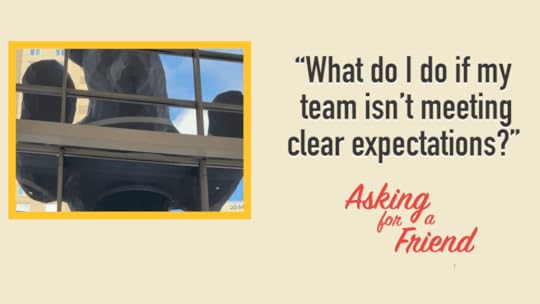
Click on the image above to watch a quick “Asking for a Friend” video from the Denver Convention Center
What Do We Mean By Couth (noun) \ˈküth at Work?
The secret sauce of high-functioning teams.
The fine art of being professionally considerate while getting stuff done.The workplace equivalent of holding the door open—but for emails, deadlines, and meetings.What separates the “awesome to work with” from the “constantly chased down for updates.”A blend of courtesy and competence—because great teams are built on both.The opposite of ghosting, deadline dodging, and vague meeting invites.How to Have Couth (Examples)Here are some examples of expectations your team might choose to include in their couth code.
🤝 Respond to Important Emails Within 24 Hours (Texts Even Faster!)Reply within 24 hours—even if it’s just a quick “Got it!” or “I’ll follow up by [date].”
Texts = Urgent. If a colleague or leader texts you, assume it’s time-sensitive and respond as quickly as you reasonably can (ideally within two hours). Even if you don’t have an answer yet, acknowledge it: “Got your text—working on it!”
Related Article: How to Get Your Team to Stop Sending You Frustrating Email Communication
🤝 No Data Without Context (a.k.a. Don’t Just Attach 37 Spreadsheets and Run)If you’re sharing data, provide a summary, key takeaways, and an informed opinion. No one has time to decode raw numbers without context. Try:
📌 “Attached is the report—key takeaway: revenue is up 12% this quarter, but customer churn increased. I recommend we look into X.” instead of “See attached.”
If you’re going to miss a deadline, don’t make people chase you. Give a heads-up, offer a revised timeline, and ask what they need.
🤝 Respect People’s Time in MeetingsIf you’re late, let them know. If you schedule a meeting, clarify the purpose. And please—no “mystery meetings” with no agenda!
🤝 Use Clear Email Subject LinesA subject line like “Quick Approval Needed by Friday” is 100x better than “Hey.”
🤝 Be Thoughtful About Asking for Help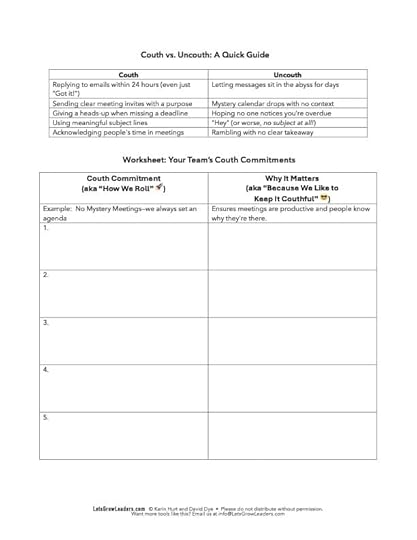
Click on the image to download a Couth Code Team Agreement Worksheet
Before you ask someone for something, consider: Can I figure this out? Is this the right person? What’s the best way to ask?
🤝 Dress with Professional Intention (Even on Zoom!)Your clothes send a message—make sure it’s the right one. Dressing professionally doesn’t mean being stiff or formal, but it does mean looking like you showed up on purpose.
Even if you’re remote, no one wants to wonder if you’re still wearing last night’s hoodie.
Gather your team and discuss the behaviors and expectations that define great teamwork in your culture. Ask: “What do we expect from each other to work well together?”Identify Pain Points
What behaviors are currently causing friction? Are there misunderstandings, repeated frustrations, or areas where people aren’t aligned? Capture these challenges and frame them as opportunities for improvement.Brainstorm Key Habits
List the most important professional habits and behaviors that will help your team thrive. Think about communication, responsiveness, meeting etiquette, and accountability. To expedite this process, you can have everyone brainstorm expectations and fill them out on sticky notes (one couthful behavior per sticky) and then group like ideas together. Our SynergyStack™ Team Collaboration System includes a set of 48 habits that would be a great start to choose from. Draft the Couth Code
Using the brainstormed ideas, craft a simple, clear, and actionable document outlining your team’s expectations. Keep it practical and concise. You can download this FREE spreadsheet to make it easier (just click on the image to the right).Get Team Buy-In
Share the draft with the team and invite feedback. Adjust as needed to ensure everyone feels ownership over the agreement.Build a Communication Plan
If you’ve been following us for a while, you know about 5×5 communication– Communicate and reinforce your habits five times, in five different waysLead by Example
Leaders should model the behaviors outlined in the agreement. If you want responsiveness, be responsive. If you expect professionalism, demonstrate it. Final Thought: Make the Team Agreement Fit Your Workplace Culture
The goal isn’t to dictate every tiny behavior—it’s to create shared clarity around what great teamwork looks like in your culture. Whether you call it Leadership Expectations, Team Commitments, or The Couth Code, the most important thing is that everyone understands it, agrees to it, and follows through.
When people know the rules of the game, it’s easier to play—and win—together.
Are you looking for more, powerful ways to accelerate team performance, reduce stress and work better together? We can help. Contact us at info@letsgrowleaders.com to learn more about our SynergySprint Team Retreat or leadership development program.
The post How to Build a Team Agreement and Get Your Team on Track appeared first on Let's Grow Leaders.
March 14, 2025
Flexible Leadership: Make Better Decisions and Reduce Stress
Episode 294: What if being a more flexible leader could help you make better decisions and lead with more confidence?
The world is moving faster than ever, and leading through uncertainty can feel overwhelming. The same leadership habits that worked before might not be enough now. What if you had a framework to adapt, lead with confidence, and reduce stress—all while staying true to your values?
In this episode of Leadership Without Losing Your Soul, Kevin Eikenberry shares how to become a more flexible leader and navigate change effectively. You’ll learn:
✔️ How to recognize when your default leadership approach isn’t serving you—and what to do instead
✔️ The four types of leadership contexts and how to adapt your decision-making for each
✔️ Practical strategies to shift from “knowing” to “doing”—so you can lead with confidence and clarity
If you’re ready to stop guessing and start leading with intentionality, hit play now and discover the roadmap to flexible leadership!
Why Flexible Leadership Matters00:00 – Most leadership training focuses on strengths and styles, but what happens when your usual approach stops working? Learn why rigid leadership can increase stress, while flexibility helps you adapt and lead more effectively.
04:29 – The world is changing rapidly—leaders who don’t adapt risk falling behind. Kevin Eikenberry shares why better decisions come from intentional flexibility, not just sticking to what’s worked in the past.
08:36 – Leadership isn’t about choosing between consistency or adaptability—it’s about balancing both. Kevin introduces a powerful metaphor: great leaders are like trees—rooted in values but flexible in response to change.
14:52 – “It depends” isn’t just a throwaway phrase—it’s the foundation of better decision-making. Learn how to assess your situation before choosing an approach, rather than reacting on autopilot.
25:03 – Not all leadership challenges are the same. Discover the four leadership contexts—Clear, Complicated, Complex, and Chaotic—and why recognizing them is key to making better decisions.
The Skills & Habits Make Better Decisions and Reduce Stress32:19 – Complex situations require different leadership tools. Instead of relying on a single model, flexible leaders know when to experiment, adapt, and seek diverse perspectives to solve problems.
39:16 – Compliance vs. Commitment: Many leaders unintentionally lead for mere compliance. Learn how to shift toward true commitment—where people take ownership and drive results.
45:47 – The biggest habit to change? Take a moment to consider the context before acting. This small shift can help you make better decisions under pressure and reduce stress.
52:00 – Leading through chaos? Sometimes, command-and-control leadership is the right approach. Learn when to give clear directives versus when to involve your team in problem-solving.
54:36 – The difference between knowing and doing: Learning leadership concepts is one thing, but applying them is another. Kevin shares practical strategies to build flexibility into your leadership habits for long-term success.
The post Flexible Leadership: Make Better Decisions and Reduce Stress appeared first on Let's Grow Leaders.
March 10, 2025
Leading Through Low Morale: How to Stay Strong When Everything Feels Uncertain
You love your work. You’ve dedicated so many years to serving your people, the mission, and making a difference. But now, everything’s changed. Day after day, you face a new set of decisions that make little sense. If anything, they seem to oppose the very work you’ve committed your life to. Your team is suffering. To say they have low morale is an understatement.
How do you lead in these times of chaos and uncertainty when nothing makes sense?
And, let’s be honest—there are days when it feels impossible for you. Days when poor leadership, broken systems, or sheer exhaustion make you wonder if your work even matters.
Here’s the truth: It does.
And so do you.
As a leader, you’re not just responsible for managing tasks—you’re guiding people through uncertainty. You’re the calm in the storm. And even when the storm feels endless, you have more power than you think.
When Morale is Low, First, Find Your StrengthYou can’t lead from an empty tank. When you have low morale and you feeling drained, disengaged, or overwhelmed, start with yourself.
Reconnect to your purpose.Why did you choose this path? Beyond the frustrations, what still matters to you about this work? Find that spark and hold on to it.
Control what you can.You may not change policies or leadership decisions, but you can control your attitude, your influence, and the way you show up for your team.
Give yourself space.Even five minutes of stepping away from the chaos—whether it’s taking a walk, breathing deeply, or writing your thoughts—can reset your mindset.
Be the Leader You’d Want Your Boss to BeIf you’re struggling with poor upper management, a disengaged board, or political decisions that have nothing to do with your actual work, don’t let that define your leadership. You don’t need permission to create a healthy, engaged, and supportive environment for your team.
Acknowledge reality.Your team knows when things are rough. Don’t sugarcoat it—but do offer hope. A simple “I know this is frustrating. And, we’ll figure it out as a team” goes a long way. When you confront a dark reality with belief in your collective strength, you empower your team to face it together. “This is hard, and we’re going to face it together” brings out the strength in your people.
Ask more than you tell.In uncertain times, people crave a voice. Ask your team, “What’s one thing we can do to make this easier?” or “How can I support you right now?” And listen to what they say.
Protect your team.When leadership is chaotic, shield your team where you can. Advocate for them. Give them the clarity that higher-ups aren’t providing.
Keep People Engaged When Morale is LowDisengagement spreads like wildfire in times of turmoil. As a leader, you have the power to shift the energy—one conversation, one moment at a time.
Celebrate small wins.Even in the worst circumstances, progress exists. Acknowledge it. A quick “I see the effort you’re putting in” can help someone feel valued.
Bring them into the solution.If decisions from above don’t make sense, ask, “How can we make this work for us?” People commit more when they help shape the path forward.
Find meaning in the moment.Even when the big picture is blurry, focus on the impact of today. Who did you help? What problem did you solve? Focus on these small wins that reinforce what truly matters.
Hold on to one another.Acknowledge one another–what you’ve been through, how you have one another’s backs, and commit to doing the best you can for one another, even as the storm swirls around you.
Your Leadership Matters More Than EverYou might not fix everything. But you can create an environment where people feel heard, supported, and valued—where they can continue to make a difference. If not for all the work you’d like to achieve, then for one another.
That’s what real leadership looks like.
And in the middle of chaos, that’s exactly what people need.
You might also like:When You’re the Scapegoat: Powerful Phrases to Address Unfair Blame7 Ways to Help Your Team Deal with Ambiguity at WorkHow to Lead Through Chaos without Burning Out You or Your Team
The post Leading Through Low Morale: How to Stay Strong When Everything Feels Uncertain appeared first on Let's Grow Leaders.
March 7, 2025
One Leadership Mindset Shift That Will Immediately Improve Your Communication
Episode 283: Is your leadership mindset getting in your way?
If you’ve ever felt frustrated that your team isn’t responding to your ideas the way you expect, this episode is for you.
As a leader, you work hard to make good decisions. But have you ever noticed that simply proving you’re right doesn’t always get the results you want? This episode dives into a powerful mindset shift that can instantly improve your communication, influence, and leadership impact.
Listen in to discover:
Why insisting on being “right” can actually reduce your influence as a leader.How shifting your mindset can unlock better ideas, faster problem-solving, and higher team performance.A practical approach to getting your team fully engaged and invested in success.Don’t let the wrong leadership mindset hold you back—hit play now and start leading with greater effectiveness today!
The Leadership Mindset Shift You Need[00:00] – Which matters more—being right or being effective? David Dye introduces a powerful leadership mindset shift that can transform communication, influence, and team performance.
[02:28] – The price of being “right.” A real-life teaching experience reveals why clinging to the belief that you’re right can actually hurt your effectiveness as a leader.
[03:31] – The key mindset shift. Leaders who prioritize effectiveness over proving themselves right build stronger influence and drive better results.
[04:38] – A stubborn lesson at the airport. A frustrating interaction at a restaurant highlights how leaders—just like customers—can get caught up in proving a point instead of achieving their goals.
Practical Strategies to Improve Your Mindset[06:43] – Ask yourself this question. The simple, game-changing question that helps leaders stop focusing on being right and start leading with greater impact.
[07:19] – Common leadership traps. “I already told them once” and “they should take responsibility” might feel valid, but they can actually damage communication and engagement.
[08:13] – Why your team stops speaking up. Leaders who insist on being right risk shutting down valuable ideas and collaboration from their teams.
[09:20] – A shift toward effectiveness. The best leaders practice ruthless self-assessment, regularly asking: “Is this working?” instead of assuming they are right.
[10:10] – A practical tool for building a high-performing team. David introduces the Synergy Stack System, a step-by-step resource designed to strengthen team collaboration and performance.
[11:05] – Final challenge: What results are you really trying to achieve? A leadership mindset focused on outcomes—not just being right—will create a more engaged, effective, and successful team.
The post One Leadership Mindset Shift That Will Immediately Improve Your Communication appeared first on Let's Grow Leaders.
February 28, 2025
Four Critical Communication Skills to Solve 90% of your Leadership Challenges
Episode 292: Are leadership challenges making your job harder than it should be?
90% of leadership challenges come down to just four things. If your team is struggling with unclear priorities, missed expectations, or low morale, you might be overlooking these critical foundations. The good news? Small shifts can make a big impact.
In this episode, you’ll discover how to:
Clarify expectations so your team knows exactly what success looks like.Equip your people with the right tools, training, and habits to perform at their best.Reinforce success through consistent messaging, accountability, and celebration.Tune in now to start eliminating 90% of your leadership challenges today! Plus, get 20% off the Synergy Stack System—use code SOUL at checkout.
Mastering Leadership Challenges with Four Simple Steps[00:00] – The Four Steps That Solve 90% of Leadership Challenges
Most leadership struggles come down to just four missing pieces. In this episode, we break them down so you can clear up confusion, improve performance, and build a high-impact team.
[01:48] – The Power of Clarity: Are You and Your Team Aligned?
One of the biggest leadership challenges is misaligned expectations. Learn how to check if your team truly understands what success looks like—and what to do if they don’t.
[03:58] – A Quick Way to Test for Clear Expectations
Think you’ve set clear goals? Here’s a simple question you can ask your team to find out if they’re really on the same page.
[06:27] – The Hidden Training Gaps That Hold Your Team Back
Many leadership challenges stem from assumptions about what your team knows. Hear how a small software training gap caused major delays—and the quick fix that solved it.
[09:47] – The Leader’s Role as the Drummer of the Team
You can’t set expectations once and expect them to stick. Learn why reinforcing success—just like keeping a steady drumbeat—is key to high performance.
[10:38] – The 5×5 Strategy for Communicating What Matters Most
One mention isn’t enough. Discover a proven method for making sure your team truly internalizes critical priorities and goals.
[12:05] – Why Celebration and Accountability Go Hand in Hand
One of the most overlooked leadership challenges? Failing to follow through. Learn how to balance celebration and accountability to keep your team engaged and motivated.
[14:22] – Are You Reinforcing Success Often Enough?
If you haven’t reminded your team of key priorities in the last week, you’re overdue. Find out why consistency matters and how to reinforce goals without micromanaging.
[15:16] – The Real Reason Many Leaders Struggle with Performance Issues
90% of leadership challenges can be traced back to these four steps. Before you blame external factors, make sure you’ve got these fundamentals locked in.
[17:02] – A Simple Tool to Strengthen Your Team’s Critical Habits
Want to build momentum and eliminate common leadership challenges? Learn how the Synergy Stack System helps teams improve performance without extra teaching or micromanaging.
Listen now to start solving your biggest leadership challenges today! Plus, get 20% off the Synergy Stack System—use code SOUL at checkout.
The post Four Critical Communication Skills to Solve 90% of your Leadership Challenges appeared first on Let's Grow Leaders.
Sudden layoff: How Do I Help My Friend Who Just Lost Their Job?
Your friend just lost their job in a sudden layoff. They’re blindsided–concerned for themselves and the mission.
Maybe it’s tied to recent government turbulence or related downstream impacts. Or a corporate shake-up.
Either way, they’re reeling, and you’re wondering how to help without overstepping or offering a bunch of empty clichés.
It’s a question I’m hearing multiple times a day, every day. So let’s talk about it. Here are some practical, human-centered ways to show up for your friend. I’ll start, and I’d love for you to add your best advice to help a friend who lost their job in a sudden layoff.

When someone loses their job, they’re often riding a rollercoaster of emotions—shock, frustration, fear, even grief. What they need most is space to feel their feels. Sometimes, the most powerful thing you can say is simply:
“I’m here. Tell me more.”
Three magic words. “Tell me more” is an open invitation—one that signals you’re there to listen. And if you’re worried you won’t have the “right” thing to say: You don’t need to. What matters most is that they feel heard.
One thing to avoid: those well-meaning but cringe-y platitudes—“Everything happens for a reason” or “You’ll bounce back better than ever”. Those phrases land flat when someone’s hurting from a sudden layoff (particularly when they DO know why it happened and that’s adding to the stress.)
Instead, say:
“This sucks. I can’t fix it, but I’m here with you in it.”
2. Offer Practical Help (Because Actions Speak Loudest)Big gestures are wonderful, but small, thoughtful actions often matter even more after a sudden layoff. The question is: What would help them right now? And sometimes, it’s the practical, logistical stuff that lifts the heaviest weight.
Can you:
Watch their kids so they can take an interview or clear their head?
Cover coffee (or lunch) and let them vent—or not talk about the job search?
Help them rehearse for an interview or polish their LinkedIn profile.
I’ll never forget the time (thirty years ago) when my (then) mother-in-law offered to cover daycare after my (then) husband lost his job. We had a new baby and a new house (with a big mortgage). It was a game-changer. That single act of practical support allowed him to focus fully on his job search without guilt or chaos, and me to stay focused on my brand new job, knowing our son was in good hands.
3. Amplify Their Story—Because Networks MatterOnce your friend is ready to job hunt, one of the best ways you can help is to share their story. Most people don’t get their next job from their closest friends—it’s from those “friend of a friend” connections. Research backs this up: Weak ties are more likely to lead to new opportunities than close ones.
But here’s the thing: Talking about yourself after a layoff can feel awkward or exhausting. That’s where you can step in. Offer to help them frame their narrative and share it with your network:
“Hey, my friend is an incredible project manager with a passion for mission-driven work in ________ arena. They’ve led cross-functional, matrixed teams and launched initiatives that drove real impact. If you know of anything, please reach out!”
Even if you don’t have direct leads, you might spark that “friend of a friend” magic—and that can make all the difference.
4. Remind Them of Their Impact– And Why It Still MattersJob loss isn’t just about losing a paycheck—it can also come with a deep sense of frustration, and feeling like their work has been wasted.. Your friend might be questioning their worth, especially if they felt a deep connection to why their work matters. So, remind them of what hasn’t changed: their skills, their heart, and the impact they’ve made.
Try something like:
“I remember when you led that project—how everyone said it wouldn’t happen without you. That’s who you are. And that hasn’t changed.”
The job title may be gone, but their value isn’t. Sometimes, they just need you to hold up the mirror until they can see it for themselves.
5. Ask, Don’t Assume—But Be Ready to ActNot everyone knows what they need right away—and that’s okay. But you can still ask:
“How can I support you right now?”
If they don’t know, don’t push. Instead, offer something specific:
“Would it help to take a break and grab coffee this week?”
“I can review your resume if that’s useful.”
“Want me to introduce you to my friend who works in your industry?”
Sometimes, having options makes it easier for them to say yes—or no—without pressure.
6. Keep Checking In (Because the Job Search Marathon is Real)The hardest part of a job search isn’t always the first few weeks—it’s the middle stretch, when the interviews stall and the rejections pile up. That’s when most people stop asking, “How are you doing?” But that’s exactly when your friend needs you most.
Set a reminder. Check in. And don’t make it all about their search—because they are more than their job hunt. Celebrate their wins and be there for their setbacks.
Over to You: Let’s put the strength of weak ties to work.
I’d love to hear: How have you shown up for a friend during a sudden layoff or career setback? Or if you’ve been through it yourself, what did someone do that truly helped you? Share it. Because somewhere, someone is “asking for a friend”—and your experience might be just what they need.
And hey—if you’re a friend looking for your next role, drop your skills and goals in the comments. Let’s make those “friend of a friend” connections work their magic.
See Also:After the Layoff: How to Help Your Team When It Just Got Smaller
Should I Quit This Workplace Conflict? How to Know When It’s Time to Leave
Bigger Better Small Talk: Practical Ways to Connect with Your Coworkers
The post Sudden layoff: How Do I Help My Friend Who Just Lost Their Job? appeared first on Let's Grow Leaders.
February 24, 2025
The Secret to High-Performance Work Teams: Mastering the Performance Loop
You know what it’s like when a high performance work team fires on all cylinders. There’s energy, trust, and clarity. You make decisions quickly, everyone shares their insights, and people genuinely enjoy working together. But you also know what it feels like when things are off—when trust erodes, confusion reigns, and progress slows to a crawl.
High performance work teams aren’t an accident. They invest in a Performance Loop that includes four key dimensions: Connection, Clarity, Curiosity, and Commitment. Whether you lead a small project team or an entire division, strengthening these four dimensions will help you build a resilient, results-driven team that thrives even in the face of challenges.
The Performance Loop: Four Dimensions of High-Performance Work TeamsHigh-performance teams excel because they consistently invest in four essential areas:
Connection—Know one another as human beings.Clarity—Have a shared understanding of success.Curiosity—Genuine interest in other perspectives and what’s possible.Commitment—Have clear agreements and consistent follow-through.Questions High-Performance Teams AskHigh-performance teams are driven by key questions that shape how they work together:
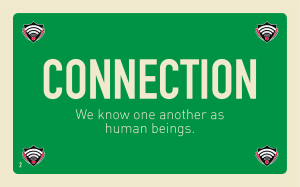
Connection: The Foundation of Trust
Great teams don’t just work together; they know one another. Without genuine connection, trust is shaky, and collaboration suffers. Consider these key questions:
Do we know one another as human beings (beyond our roles or tasks)?Do I trust my team? Do they trust me?Do people feel that we genuinely care about one another?💡 Leader Habit: Make time for intentional check-ins (with questions like these compassionate conversation starters) that go beyond work. A simple “What’s one thing you’re excited about outside of work?” at the start of a meeting can build connection.
For more Connection-building Habits check out: Better Teamwork: 12 Practical Team Habits to Build Deeper Connection
Clarity: Aligning on Success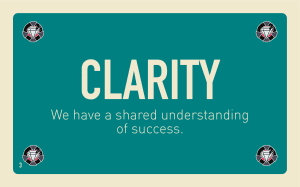
Clarity is the foundation for your team’s results and relationships. Without clarity, results suffer, but a lack of clarity also erodes trust and damages relationships. To ensure alignment, ask:
Do we have a shared understanding of success?Does everyone know why our work matters?Does everyone know what they need to do and how to do it?💡 Leader Habit: Define success in clear, specific terms. Instead of saying, “Let’s improve customer service,” say, “Our goal is to reduce response time by 30% and increase customer satisfaction scores by 10 points.”
💡 Leader Habit: Check for Understanding: ensure that everyone walks away from a conversation with the same understanding. Instead of saying, “Do you understand,” ask: “What is your understanding of our response time goal?”
For more Clarity-building Habits check out: Great Teams: 12 Practical Collaboration Habits to Create Clarity
Curiosity: Unlocking Innovation and Problem-Solving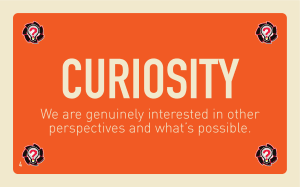
The best teams don’t settle for surface-level thinking. They challenge assumptions, anticipate obstacles, and seek better ways to work. These teams consistently ask:
Are there alternatives we should consider?What could prevent our success if we don’t address it?What other perspectives or experiences should we bring into this conversation?💡 Leader Habit: Model curiosity. Instead of shutting down new ideas with “That won’t work,” respond with regard or explore further by asking, “How would it help us achieve our goal? What would need to be true for this idea to succeed?”
For more Curiosity-building Habits check out: Creative Teams: 12 Habits That Foster Curiosity and Collaboration
Commitment: From Words to Action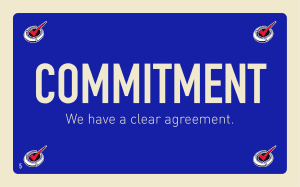
Without commitment, great ideas and plans go nowhere. High-performance work teams don’t just talk about what they’ll do—they do it. But commitment isn’t simply an act of willpower. These teams ensure following through by asking:
Do we have specific, shared agreements?Are we closing the loop with both celebration and accountability?Do we practice direct, timely accountability?💡 Leader Habit: Use “Scheduling the Finish”—have a discussion about feasibility, competing priorities, and then schedule a brief meeting to close the loop or check on progress. A simple “Let’s check back on this in two weeks” prevents tasks from slipping through the cracks. During these sessions, be prepared to either celebrate success or have an accountability conversation. Either way, focus on lessons learned for the future.
For more Commitment-building Habits check out: Create Commitment: 12 Habits to Build Agreement and Accountability
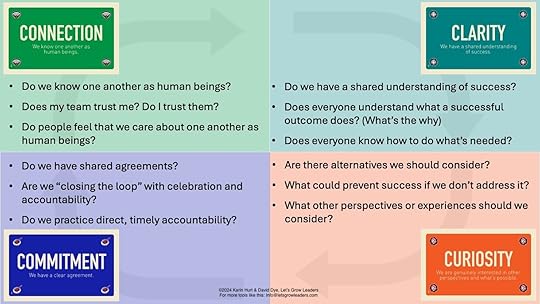 Solve Your Performance Gaps
Solve Your Performance GapsIf your team isn’t performing at the level you expect, one or more of these dimensions is likely lacking. Here’s how to diagnose and address the issue:
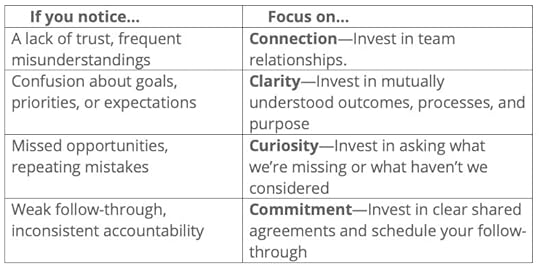
High-performance teams don’t happen by accident—you build them through intentional investment in Connection, Clarity, Curiosity, and Commitment.
Which of these dimensions needs the most attention on your team?
✔ Start small. Pick one habit from this list and implement it this week.
✔ Get input. Introduce the Four Dimensions to your team and ask them: “Which one would make the biggest difference for us right now?”
✔ Commit to consistency. High performance isn’t a one-time effort—it’s a way of working.
When you invest in these four dimensions, you don’t just build a productive team—you build a team that people want to be part of.
And if you want to help your team quickly invest in these dimensions to accelerate performance, reduce stress, and work better together, we invite you to check out the SynergyStack System. It’s got everything you need to help your team get to the next level. Or contact us to learn more about working with us to customize a SynergyStack™ Team Retreat for your team.
The post The Secret to High-Performance Work Teams: Mastering the Performance Loop appeared first on Let's Grow Leaders.
Four Dimensions High-Performance Work Teams Invest In and Master
You know what it’s like when a high performance work team fires on all cylinders. There’s energy, trust, and clarity. You make decisions quickly, everyone shares their insights, and people genuinely enjoy working together. But you also know what it feels like when things are off—when trust erodes, confusion reigns, and progress slows to a crawl.
High performance work teams aren’t an accident. They invest in a Performance Loop that includes four key dimensions: Connection, Clarity, Curiosity, and Commitment. Whether you lead a small project team or an entire division, strengthening these four dimensions will help you build a resilient, results-driven team that thrives even in the face of challenges.
The Performance Loop: Four Dimensions of High-Performance Work TeamsHigh-performance teams excel because they consistently invest in four essential areas:
Connection—Know one another as human beings.Clarity—Have a shared understanding of success.Curiosity—Genuine interest in other perspectives and what’s possible.Commitment—Have clear agreements and consistent follow-through.Questions High-Performance Teams AskHigh-performance teams are driven by key questions that shape how they work together:

Connection: The Foundation of Trust
Great teams don’t just work together; they know one another. Without genuine connection, trust is shaky, and collaboration suffers. Consider these key questions:
Do we know one another as human beings (beyond our roles or tasks)?Do I trust my team? Do they trust me?Do people feel that we genuinely care about one another?💡 Leader Habit: Make time for intentional check-ins (with questions like these compassionate conversation starters) that go beyond work. A simple “What’s one thing you’re excited about outside of work?” at the start of a meeting can build connection.
For more Connection-building Habits check out: Better Teamwork: 12 Practical Team Habits to Build Deeper Connection
Clarity: Aligning on Success
Clarity is the foundation for your team’s results and relationships. Without clarity, results suffer, but a lack of clarity also erodes trust and damages relationships. To ensure alignment, ask:
Do we have a shared understanding of success?Does everyone know why our work matters?Does everyone know what they need to do and how to do it?💡 Leader Habit: Define success in clear, specific terms. Instead of saying, “Let’s improve customer service,” say, “Our goal is to reduce response time by 30% and increase customer satisfaction scores by 10 points.”
💡 Leader Habit: Check for Understanding: ensure that everyone walks away from a conversation with the same understanding. Instead of saying, “Do you understand,” ask: “What is your understanding of our response time goal?”
For more Clarity-building Habits check out: Great Teams: 12 Practical Collaboration Habits to Create Clarity
Curiosity: Unlocking Innovation and Problem-Solving
The best teams don’t settle for surface-level thinking. They challenge assumptions, anticipate obstacles, and seek better ways to work. These teams consistently ask:
Are there alternatives we should consider?What could prevent our success if we don’t address it?What other perspectives or experiences should we bring into this conversation?💡 Leader Habit: Model curiosity. Instead of shutting down new ideas with “That won’t work,” respond with regard or explore further by asking, “How would it help us achieve our goal? What would need to be true for this idea to succeed?”
For more Curiosity-building Habits check out: Creative Teams: 12 Habits That Foster Curiosity and Collaboration
Commitment: From Words to Action
Without commitment, great ideas and plans go nowhere. High-performance work teams don’t just talk about what they’ll do—they do it. But commitment isn’t simply an act of willpower. These teams ensure following through by asking:
Do we have specific, shared agreements?Are we closing the loop with both celebration and accountability?Do we practice direct, timely accountability?💡 Leader Habit: Use “Scheduling the Finish”—have a discussion about feasibility, competing priorities, and then schedule a brief meeting to close the loop or check on progress. A simple “Let’s check back on this in two weeks” prevents tasks from slipping through the cracks. During these sessions, be prepared to either celebrate success or have an accountability conversation. Either way, focus on lessons learned for the future.
For more Commitment-building Habits check out: Create Commitment: 12 Habits to Build Agreement and Accountability
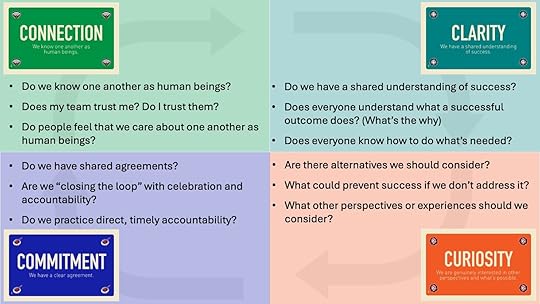 Solve Your Performance Gaps
Solve Your Performance GapsIf your team isn’t performing at the level you expect, one or more of these dimensions is likely lacking. Here’s how to diagnose and address the issue:
If you notice…Focus on…A lack of trust, frequent misunderstandingsConnection—Invest in team relationships.Confusion about goals, priorities, or expectationsClarity—Invest in mutually understood outcomes, processes, and purposeMissed opportunities, repeating mistakesCuriosity—Invest in asking what we’re missing or what haven’t we consideredWeak follow-through, inconsistent accountabilityCommitment—Invest in clear shared agreements and schedule your follow-throughYour TurnHigh-performance teams don’t happen by accident—you build them through intentional investment in Connection, Clarity, Curiosity, and Commitment.
Which of these dimensions needs the most attention on your team?
✔ Start small. Pick one habit from this list and implement it this week.
✔ Get input. Introduce the Four Dimensions to your team and ask them: “Which one would make the biggest difference for us right now?”
✔ Commit to consistency. High performance isn’t a one-time effort—it’s a way of working.
When you invest in these four dimensions, you don’t just build a productive team—you build a team that people want to be part of.
And if you want to help your team quickly invest in these dimensions to accelerate performance, reduce stress, and work better together, we invite you to check out the SynergyStack System. It’s got everything you need to help your team get to the next level:
The post Four Dimensions High-Performance Work Teams Invest In and Master appeared first on Let's Grow Leaders.






